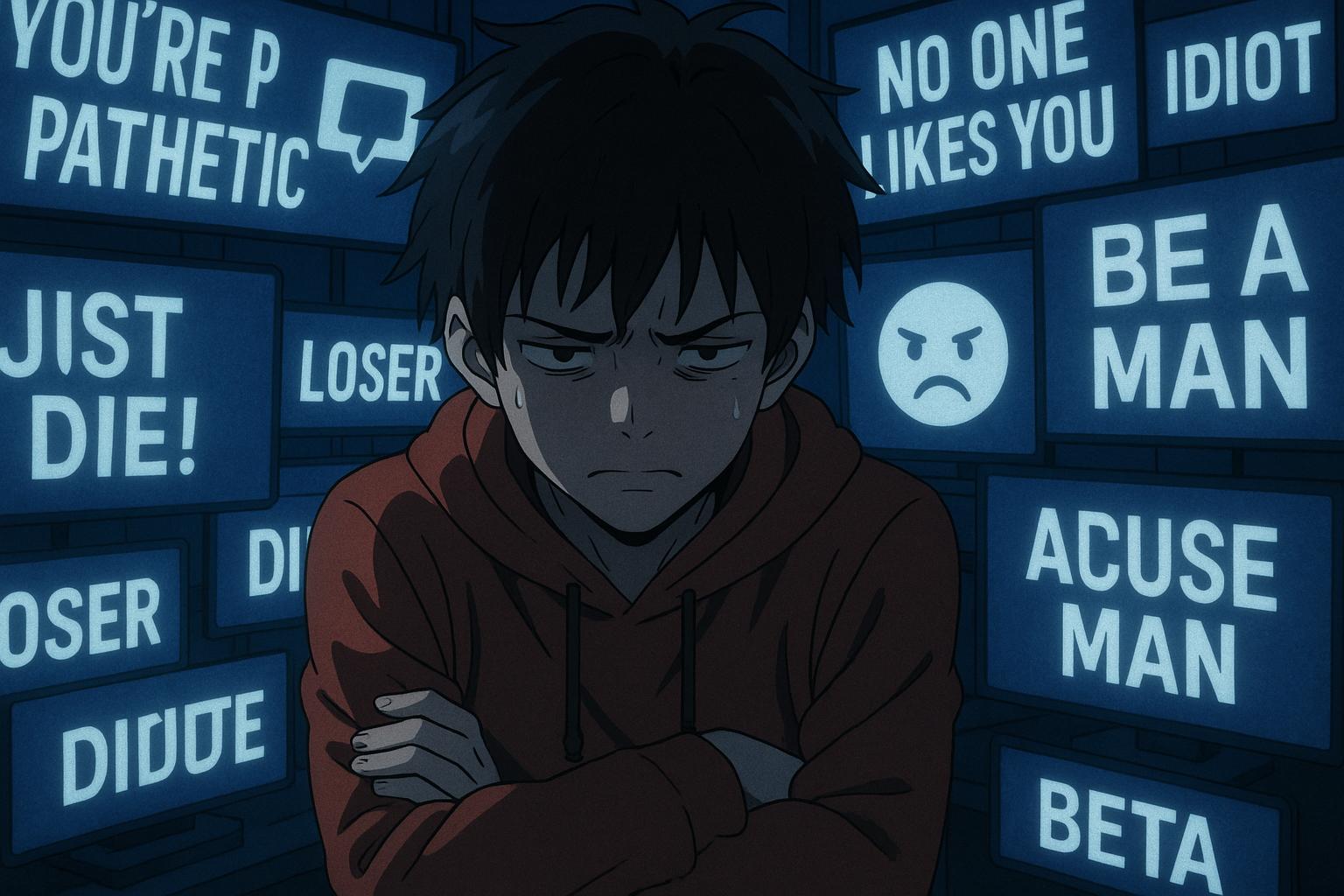Netflix’s new miniseries Adolescence exposes the dangerous grip of the incel subculture and online misogyny on young men, urging greater societal empathy and educational intervention to combat radicalisation and mental health challenges.
The surge of interest in the Netflix miniseries Adolescence has reignited discussions around the incel community, a group of predominantly young men who identify as “involuntarily celibate.” These individuals often grapple with feelings of frustration and despair due to perceived societal rejection, which can lead to severe mental health challenges. Andrew G. Thomas emphasises that understanding and addressing these issues may be crucial for both the individuals affected and broader society.
Adolescence, a gripping narrative that unfolds the life of a thirteen-year-old boy, Jamie, who becomes embroiled in violent behaviour, explores themes such as toxic masculinity and cyberbullying. The series portrays how digital influences, including the incel subculture, can warp young minds, steering them towards misogyny and violence. This phenomenon is increasingly relevant, as studies have shown that exposure to such content online often exacerbates feelings of isolation and anger in vulnerable adolescents. A key scene in episode two starkly highlights these themes, prompting critical conversations about the responsibility of digital platforms in shaping young people’s views on gender relations.
Critics point out that the series not only portrays the detrimental impact of incels on personal lives but also critiques how these beliefs permeate social dynamics. Research indicates that the incel community thrives on grievances about women and society, fostering dangerous ideologies that often manifest in violence. As seen in the character of Jamie, the emotional turmoil faced by young men can become deeply intertwined with their online identities, often leading to tragic outcomes.
Experts stress the importance of dialogue within families and educational settings to counteract these harmful narratives. Encouraging critical thinking and emotional intelligence can empower young people, equipping them with the tools necessary to challenge pervasive misogynistic ideals. Educational institutions are increasingly called upon to integrate discussions about these matters into their curricula, recognising that young audiences are not merely passive consumers of media but active participants in shaping societal norms.
The depiction of the incel community in Adolescence serves as a mirror reflecting the real-world perils of online radicalisation. As noted by commentators, the influence of figures like Andrew Tate—who propagate misogynistic beliefs—has made the issue of online misogyny an urgent concern. By highlighting the connections between online rhetoric and offline violence, the series aims to foster awareness and spur necessary conversations about mental health and societal responsibility.
Ultimately, Thomas asserts that the narratives surrounding incels must be approached with empathy and understanding. The journey towards addressing the issues they face requires a multifaceted approach—recognising both the complexities of their experiences and the necessity for societal intervention. As the conversation evolves, it remains imperative that we confront the factors contributing to these young men’s despair while simultaneously challenging the harmful ideologies that may drive them.
Reference Map
- Paragraph 1: (1)
- Paragraph 2: (2), (3)
- Paragraph 3: (4), (6)
- Paragraph 4: (5)
- Paragraph 5: (6), (7)
Source: Noah Wire Services
- https://www.independent.ie/opinion/comment/andrew-g-thomas-what-ive-discovered-about-who-incels-really-are-and-how-we-can-help-them/a1853092080.html – Please view link – unable to able to access data
- https://time.com/7267884/adolescence-netflix-explained/ – This article discusses Netflix’s miniseries ‘Adolescence,’ which delves into the story of 13-year-old Jamie Miller, arrested for stabbing a classmate. The series explores themes like toxic masculinity, cyberbullying, and the incel subculture’s influence on teen behavior. It critiques the impact of online communities and social media on youth identity and mental health, highlighting the strain on Jamie’s family and the broader societal implications of these issues.
- https://www.theatlantic.com/culture/archive/2025/04/adolescence-netflix-manosphere-episode-3/682482/?utm_source=apple_news – This article examines Netflix’s ‘Adolescence,’ focusing on the psychological and societal influences surrounding 13-year-old Jamie, accused of murdering a classmate. The show subtly references the ‘manosphere,’ a network of online communities promoting misogynistic beliefs, and has sparked significant public and educational discourse in the UK. It highlights the emotional depth of Jamie’s character and the broader social implications of teenage anger, toxic masculinity, and digital influences.
- https://www.huffingtonpost.es/life/hijos/como-manosfera-llega-moviles-adolescentes-que-padres-debate-abierto-adolescencia.html – This article discusses how Netflix’s ‘Adolescence’ highlights adolescents’ exposure to misogynistic content on social media and its impact on their beliefs and behaviors. The series portrays a teenager accused of murdering a classmate, reflecting the negative influence of figures like Andrew Tate who spread misogynistic messages. Experts recommend fostering dialogue at home and in schools to educate young people in critical thinking and self-esteem, and regulating digital content to protect minors and combat gender-based violence.
- https://www.huffingtonpost.es/life/cultura/claves-adolescencia-serie-netflix-reino-unido-piden-poner-institutos.html – This article highlights Netflix’s ‘Adolescence,’ a miniseries that has garnered critical acclaim and public attention. The series, consisting of four episodes, follows 13-year-old Jamie, accused of murdering a classmate, and addresses themes like toxic masculinity, cyberbullying, and the influence of the incel subculture on adolescents. Its raw portrayal of these issues has led to calls for its inclusion in UK educational institutions to foster discussion and counteract these problems.
- https://www.childnet.com/blog/talking-about-misogyny-and-other-themes-raised-in-netflixs-adolescence/ – This article discusses Netflix’s ‘Adolescence,’ focusing on the incel culture and misogyny depicted in the series. It explains that ‘incel’ stands for ‘involuntary celibate,’ where men blame women and society for their lack of romantic success. The article highlights how online communities can facilitate the sharing of these harmful views among young men and provides key terms and phrases used within incel culture, such as ‘manosphere,’ ‘red pill,’ ‘blue pill,’ and ‘black pill.’
- https://en.wikipedia.org/wiki/Incel – This Wikipedia article provides an overview of the incel subculture, describing it as an online community of mostly male and heterosexual individuals who define themselves as unable to find a romantic or sexual partner despite desiring one. The article covers the history, organization, ideology, and demographics of incel communities, as well as their association with extremism and violence. It also discusses the promotion of violence within these communities and their impact on society.
Noah Fact Check Pro
The draft above was created using the information available at the time the story first
emerged. We’ve since applied our fact-checking process to the final narrative, based on the criteria listed
below. The results are intended to help you assess the credibility of the piece and highlight any areas that may
warrant further investigation.
Freshness check
Score:
8
Notes:
The narrative references recent societal discussions and a Netflix miniseries, indicating a contemporary focus. However, specific details about the timing of the series release or related events are not provided.
Quotes check
Score:
6
Notes:
No specific quotes are directly attributed to original sources in the narrative. The narrative cites Andrew G. Thomas, but without an explicit quote to verify.
Source reliability
Score:
7
Notes:
The narrative originates from The Irish Independent, a reputable publication. However, the narrative’s analysis and opinions may vary in objectivity.
Plausability check
Score:
9
Notes:
The claims about the incel community and its impact are plausible and supported by research on toxic masculinity and online influences. The narrative aligns with current societal concerns about misogyny and violence.
Overall assessment
Verdict (FAIL, OPEN, PASS): PASS
Confidence (LOW, MEDIUM, HIGH): MEDIUM
Summary:
While the narrative is generally plausible and originates from a reputable source, the lack of specific quotes or detailed fact-checking on some claims limits the overall confidence in the assessment.













